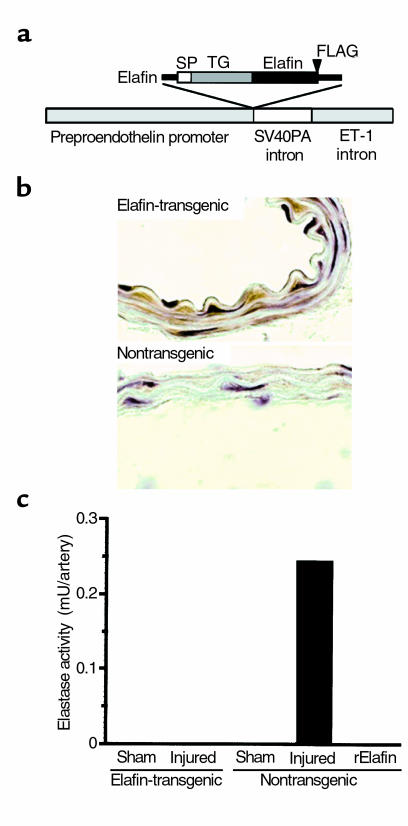Figure 2.
Elafin-overexpressing transgenic mice. (a) Diagram of the construct used to create the transgenic mice in which COOH-terminal FLAG-tagged human elafin was cloned downstream of the mouse preproendothelin promoter. Signal peptide (SP), transglutaminase substrate (TG), and elafin inhibitory domains are denoted along the top of elafin cDNA. ET-1, endothelin-1. (b) Carotid arteries from elafin-transgenic and nontransgenic mice were immunostained with anti-FLAG antibodies before hematoxylin counterstaining. Brown immunoperoxidase staining for FLAG-elafin is observed in the carotid artery from the elafin-transgenic but not the nontransgenic littermate. (c) Six hours after carotid arterial injury, sham-operated and injured arteries pooled from four different elafin-transgenic or nontransgenic mice were assayed for elastase activity. Elastase activity is expressed per artery as described in the legend to Figure 1. Recombinant human elafin (rElafin; 2 ng) completely abolished the elastase activity of nontransgenic-injured arteries.

